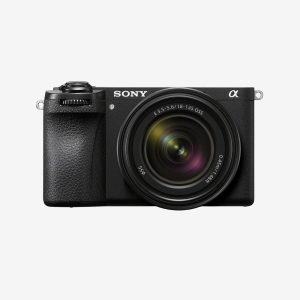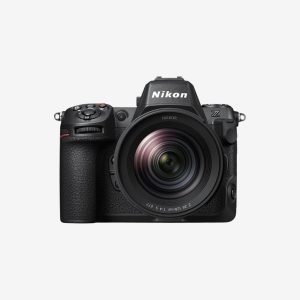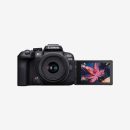The Canon R10 delivers professional-grade features at a surprisingly affordable $979. This camera body offers incredible value to aspiring content creators. It shoots up to 23 frames per second and captures oversampled 4K video at 30p – capabilities you’d typically find in more expensive models.
The R10 excels as a versatile tool for vlogging and content creation. Its 24MP APS-C CMOS sensor pairs perfectly with an advanced autofocus system from the EOS R3. The camera’s fully articulating touchscreen enhances its appeal. The detailed subject tracking covers 100% of the frame effectively. Our review will show you how these features work together to create an ideal camera for content creators who need dependable performance at a reasonable price.
Essential Vlogging Features
The EOS R10 gives content creators advanced video capabilities through its powerful DIGIC X processor. This processing engine produces high-quality 4K/30p video oversampled from 6K with exceptional detail and clarity. The camera records 4K/60p video that captures smooth motion in action sequences perfectly.
The R10’s vlogging excellence comes from its Dual Pixel CMOS AF II system. This smart autofocus technology tracks people, animals, and vehicles in both photo and video modes. The touchscreen interface lets you quickly select focus points and choose between left and right eye tracking.
The camera’s electronic viewfinder packs 2.36 million dots with selectable refresh rates of 60/120fps to give you a responsive viewing experience. The 3-inch vari-angle touchscreen display features 1.04 million dots that lets creators:
- Watch their compositions from any angle
- Use touch controls for quick menu settings
- Get tap-to-focus features
- Set up perfect selfie shots and vlogs
Content creators can stream directly to YouTube without a computer. You just need to connect to a Wi-Fi network to start broadcasting. The camera supports vertical video capture that works great for social media stories and mobile-first content.
The R10’s wireless features go beyond streaming. Built-in Bluetooth Low Energy keeps a constant connection with smart devices, while 2.4GHz Wi-Fi activates naturally for image transfers. Creators can use the Canon Camera Connect app to control the camera remotely, adjust settings, and capture content from their smartphones.
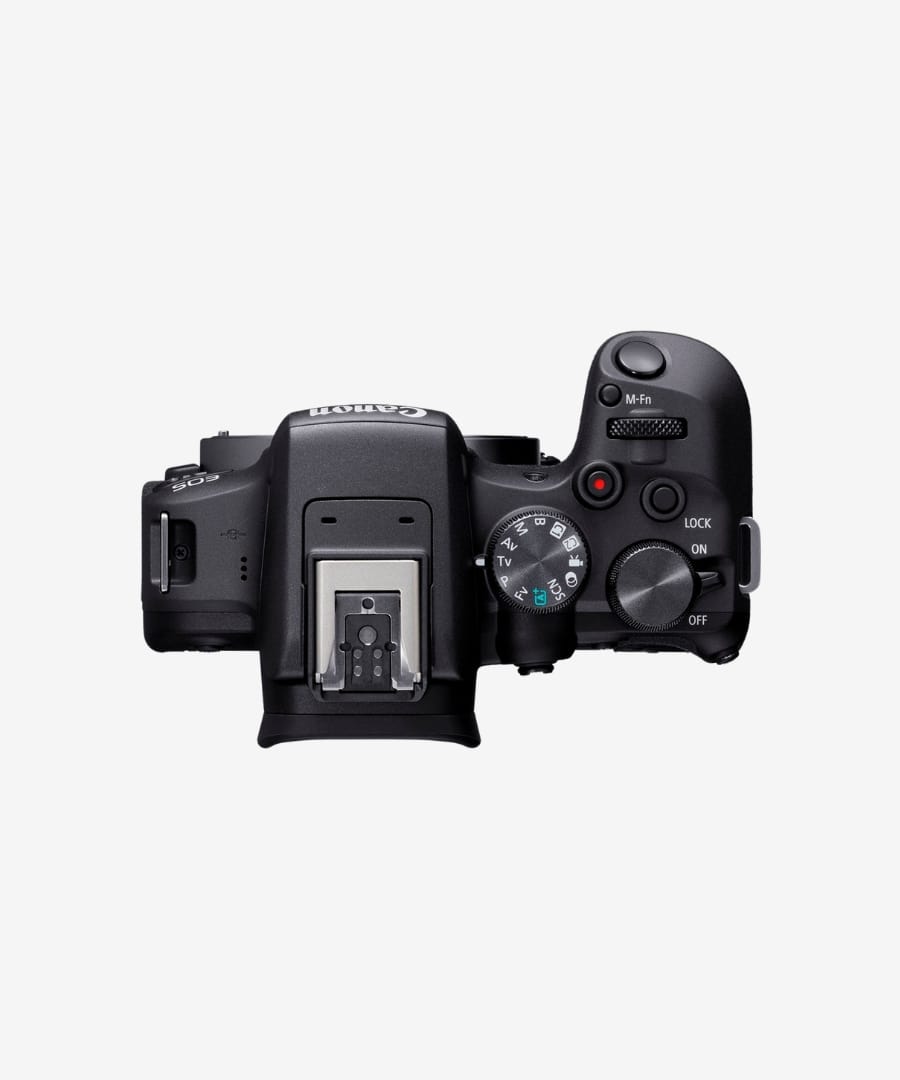
Design and Ergonomics
The Canon R10’s compact body measures 4.82 inches wide, 3.46 inches tall, and 3.28 inches in depth. The camera feels professional with its dense, high-grade plastic construction and sturdy button mechanisms.
The well-contoured grip makes the camera comfortable to hold during long shooting sessions. The textured rubber material across the body adds a premium feel. The R10 weighs just 429 grams with battery and memory card installed, striking a perfect balance between being light and stable.
Canon’s layout shows their dedication to making controls easy to use. The camera includes:
- A slanted shutter button with finger groove
- Dual control dials to adjust exposure
- Multi-controller joystick to select focus points quickly
- Customizable four-way D-pad
- Dedicated AF/MF switch with programmable button
The electronic viewfinder packs 2.36 million dots resolution and pairs with a 3-inch fully articulating LCD screen that has 1.04 million dots. The touchscreen gives you detailed control to navigate menus, select focus points, and use touch shutter features.
In spite of that, you might face small ergonomic challenges. The right-side directional pad can get pressed by accident when holding the camera, even with smaller hands. Photographers with larger hands might need time to adjust to the camera’s compact size.
Canon’s tab-based menu system shines with its user-friendly design. You can customize button functions and quick menu settings based on your priorities. DSLR users will find the OVF Assist mode helps them switch to the mirrorless system smoothly.
Each button and dial has its own shape and texture. This smart design lets you identify them by touch while keeping your eye on the viewfinder. The layout helps you adjust settings quickly as you shoot without breaking your creative flow.

Handling and Controls
The Canon R10’s controls are user-friendly and easy to master. The camera’s dual-step shutter button gives you precise control – a halfway press activates autofocus and exposure metering, and pressing it fully captures your image.
The Main Dial and Quick Control Dial work together seamlessly. These dials adjust settings like ISO speed, drive mode, and AF operation after you press function buttons. The Quick Control Dial lets you adjust exposure compensation while keeping your eye on the viewfinder.
The R10 shines with these standout features:
- Custom shooting modes that give instant access to preferred settings
- Customized My Menu screen for your most-used options
- Custom function buttons to make quick adjustments while shooting
- OVF Assist mode to help DSLR users adapt easily
The Multi-Controller, an eight-direction key with center button, handles several functions. You can move AF points, correct white balance, and navigate menus. The Multi-Function Lock button keeps your settings safe by securing the main dial, quick control dial, multi-controller, and touch-screen panel.
RF lens users will appreciate the Control Ring. It adjusts exposure compensation while holding the shutter button halfway in different shooting modes. The camera’s guided interface helps newcomers learn the ropes.
The Quick Control screen adapts to your needs. You can change the layout and choose which items to display, creating a control setup that matches your shooting style. The camera alerts you about rising internal temperatures through icons and indicators, which helps maintain peak performance during long shooting sessions.
Fully Articulating Touchscreen
The R10’s interface features a 3-inch LCD screen with 1.04 million dots resolution. Content creators will love its side-hinged design that lets them adjust viewing angles in both portrait and landscape modes.
The vari-angle mechanism makes the screen incredibly flexible. You can flip it out, rotate it freely, and adjust it up or down to get the perfect angle. The screen also faces forward for self-recording, which makes it perfect for vlogging.
Touch functionality adds these features to the screen:
- Capacitive controls for menu navigationQuick setting adjustments
- Playback operations with gesture support
- AF point selection in both photo and video modes
The screen’s 720 x 480 pixel resolution works with touch sensitivity to give you access to features like punch-in focus preview and focus box centering. When the screen faces forward, it shows a mirror image to help you frame shots better.
Your screen stays protected with the R10’s smart design. You can fold it inward against the camera body when you’re not using it. Just remember that connecting cables to the camera will limit how much you can rotate the screen.
The touchscreen does more than simple operations. You get magnified display views and touch shutter features for precise image capture. This easy-to-use touch system and full screen movement let you capture amazing shots from any angle.
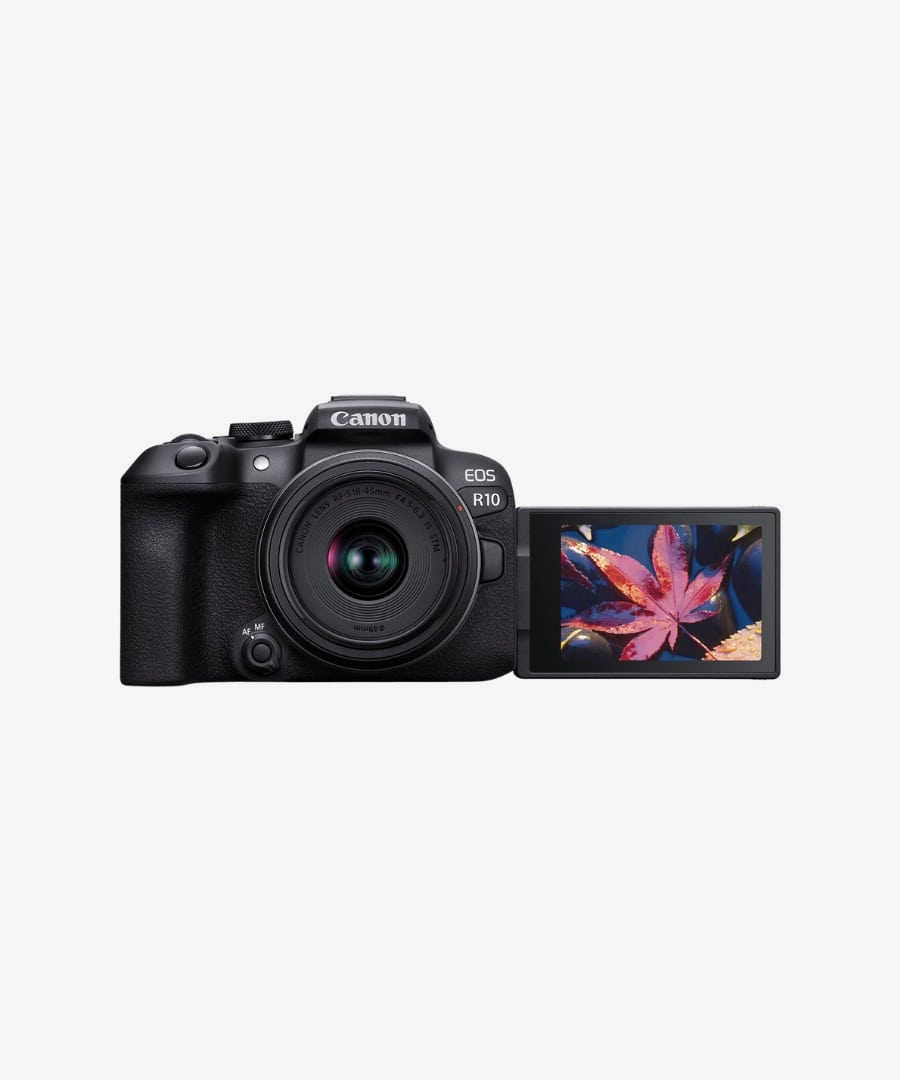
4K Video
The R10 captures stunning 4K video through 6K oversampling that produces sharp, detailed footage. You’ll find the camera records 4K UHD at different frame rates, and the standard 30p mode uses the full sensor width.
Advanced Recording Options include:
- 4K UHD at 29.97, 25, and 23.98 fps with IPB compression at 120 Mbps
- 4K/60p recording with a 1.56x crop at 230 Mbps
- Full HD recording up to 120 fps for smooth slow-motion effects
- Time-lapse modes in both 4K and Full HD resolutions
The R10’s HDR PQ recording supports 10-bit 4:2:2 color depth that gives you better dynamic range and color accuracy. This feature opens up more options in post-production, especially if you work with HDR displays.
You can record continuously without limits, though real-world constraints apply. The R10 typically records for about 60 minutes straight before heat might affect its performance.
The 4K footage shows excellent dynamic range and accurate colors that make it perfect for professional content creation. Quick panning movements can show some rolling shutter effect, but this gets better in 4K/60p mode.
Time-lapse creators will love the dedicated 4K modes that capture at 29.97 or 25 fps with ALL-I compression at 470 Mbps. The camera lets you extract frames from 4K footage, but you can’t resize or crop these stills in-camera.
Autofocus
The R10’s sophisticated autofocus system runs on deep-learning AI technology that tracks people, animals, and vehicles with amazing precision. This smart system follows a clear order when focusing – it looks for eyes first, then faces, heads, and finally bodies when other features aren’t visible.
Advanced Subject Detection shows its true strength in the way it tracks cats, dogs, and birds, even when they move unpredictably. The R10’s skill at capturing birds in flight stands out – something photographers know is one of the toughest challenges out there.
The AF system lets you customize your shooting with four unique cases:
- Case 1 works great as your go-to setting for moving subjects
- Case 2 keeps focus locked even with obstacles in the way – perfect for sports and wildlife
- Case 3 catches subjects that pop into frame faster
- Case 4 handles subjects that keep changing speed
The camera performs brilliantly in low light. Its Dual Pixel CMOS AF II technology stays accurate even when light drops to -4EV. This feature is a great way to get better shots at evening events and indoor sessions where lighting isn’t ideal.
The R10’s autofocus system puts highly sensitive AF zones across your entire viewfinder. A user-friendly joystick controller helps you manage focus points alone or in groups. The system goes beyond traditional methods with touch-and-drag AF, so you can adjust focus points right on the touchscreen.
The camera focuses well even with maximum apertures down to f/22, which means you can use teleconverters. The system packs professional features with 651 phase-detection points and shares its smarts with higher-end models. You get six dedicated menu pages to fine-tune your focus settings for different scenarios.
Video Quality and Recording Options
The Canon R10 gives you two MP4 recording options. You can use IPB Standard when you just need efficient multi-frame compression or IPB Light to get smaller file sizes.
4K and 1080p Recording
You’ll find multiple recording resolutions and frame rates on this camera. The 4K UHD mode (3840 x 2160) lets you record at 29.97, 25, or 23.98 fps using the full sensor width. The camera also shoots 4K/60p with a crop factor, which works great for action sequences. Full HD recording (1920 x 1080) supports frame rates of 59.94, 50, 29.97, 25, and 23.98 fps.
Each clip can record up to 2 hours. You’ll just need cards with fast writing speeds for 4K recording since this mode substantially increases processing demands.
HDR Video
The R10’s high dynamic range recording shines through its HDR PQ mode, which keeps detail in high-contrast scenes. This feature combines multiple frames for HDR footage. You might want to use a tripod since handheld recording can show slight distortion.
The camera lets you control these settings for the best HDR results:
- Shutter speed adjustments
- Aperture value settings
- ISO speed modifications
Slow Motion Video
The R10 captures impressive high frame rate footage at 119.9 fps or 100.0 fps in Full HD resolution. These recordings create smooth slow-motion effects at 1/4 speed. A 30-minute session gives you about 2 hours of slow-motion playback.
Slow-motion recording has some key points to remember. The camera disables sound recording during high frame rate capture. It processes the footage as 29.97 fps or 25.00 fps files. The ISO range runs from 100 to 12800, and you can expand it to 25600.
The HDMI output runs at 59.94 fps or 50.00 fps, which works well with external recorders and monitors. Advanced sensor and processor combination helps the camera handle these demanding recording modes while keeping image quality intact.
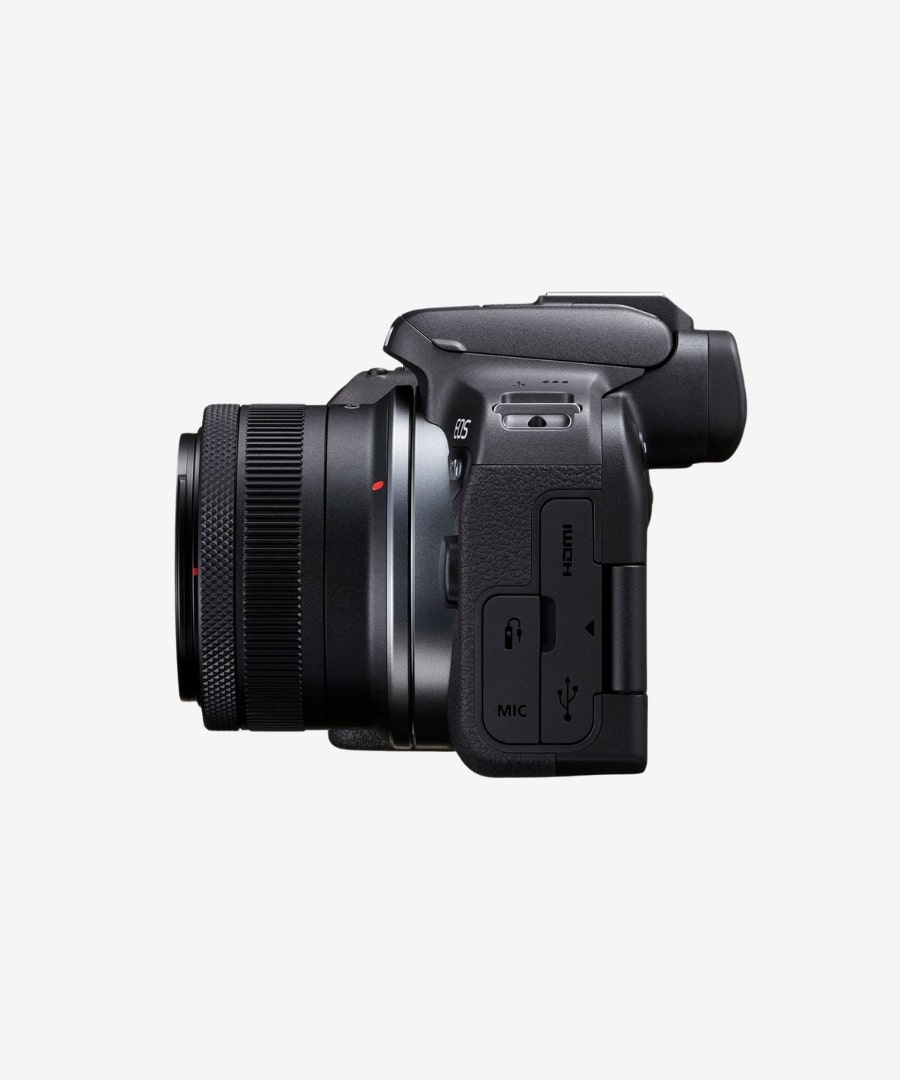
Audio Recording
The R10’s sound recording system revolves around a built-in stereo microphone that works at 48 KHz sampling rate with 16-bit depth on two channels.
Built-in Microphone
The R10’s integrated microphone system is a great way to get automatic level control that adapts to different sound intensities. Audio noise reduction comes with three settings: Disable, Enable, and High. Each level steps up the suppression of mechanical sounds and white noise. We used this feature to cut down lens operation sounds and autofocus noise during recording.
The camera lets you control recording levels manually through an on-screen meter. You can tweak settings while watching the peak hold indicator. This helps keep audio below the -12 dB mark to avoid distortion.
External Mic Options
A standard 3.5mm stereo microphone input makes the R10 work with microphones from Canon and third-party makers like Rode. The camera’s built-in wind filter turns off automatically once you plug in an external microphone.
Key audio settings include:
- Automatic level adjustment with responsive control
- Manual recording level adjustment
- Wind filter for outdoor shooting
- White noise reduction options
Audio Monitoring
The R10 lets you monitor audio through HDMI output when connected to external displays. But you’ll need active recording for sound output through HDMI. Sound quality stays consistent with its 48 kHz/16-bit sampling rate no matter which recording mode you pick.
Vloggers will find the R10’s audio system really helpful since it records left/right channels without manual balance tweaks. Keep in mind that using Wi-Fi might add unwanted sounds to your recordings. You’ll get better results by placing external microphones away from the camera body. This reduces mechanical noise interference during shooting.
Image Stabilization Performance
The R10’s steady shooting capabilities come from its multi-layered approach. This camera doesn’t use in-body image stabilization. Instead, it combines lens-based and digital stabilization methods to get the job done.
Digital Stabilization
Movie digital IS works as the main tool to reduce camera shake in videos. Users can choose from three different settings:
- Off – Disables digital stabilization
- On – Applies standard stabilization with slight image magnification
- Enhanced – Gives stronger correction with increased magnification
The digital stabilization works differently based on focal length. Wide-angle shots usually look more stable. However, telephoto shots don’t get the same level of stabilization. The digital IS system can sometimes add some graininess and slight blur in certain conditions.
Lens-based Stabilization
The R10 relies heavily on optical stabilization through compatible IS lenses. Canon’s RF-S lenses with built-in Image Stabilizer switches work naturally with the camera. Users can turn on stabilization through the camera menu for IS lenses that don’t have dedicated switches.
The RF-S 18-150mm F3.5-6.3 IS STM kit lens shows remarkable stability. It helps capture clear handheld shots even at slower shutter speeds. Photographers might need extra support for stable footage when using non-IS lenses.
Handheld Shooting Stability
Since there’s no in-body stabilization, handheld shooting needs special attention. Creators often use tripods or gimbals with non-stabilized lenses to get better results. Several factors affect how well the stabilization works:
- Lens size and weight
- Focal length selection
- Hand steadiness
- Shooting conditions
The digital Movie IS feature works best when it’s set up for specific video scenarios. A slight crop factor appears when digital stabilization is on, which affects how you plan your shots. The camera performs better on a tripod with Movie digital IS turned off, as this prevents unwanted correction artifacts.
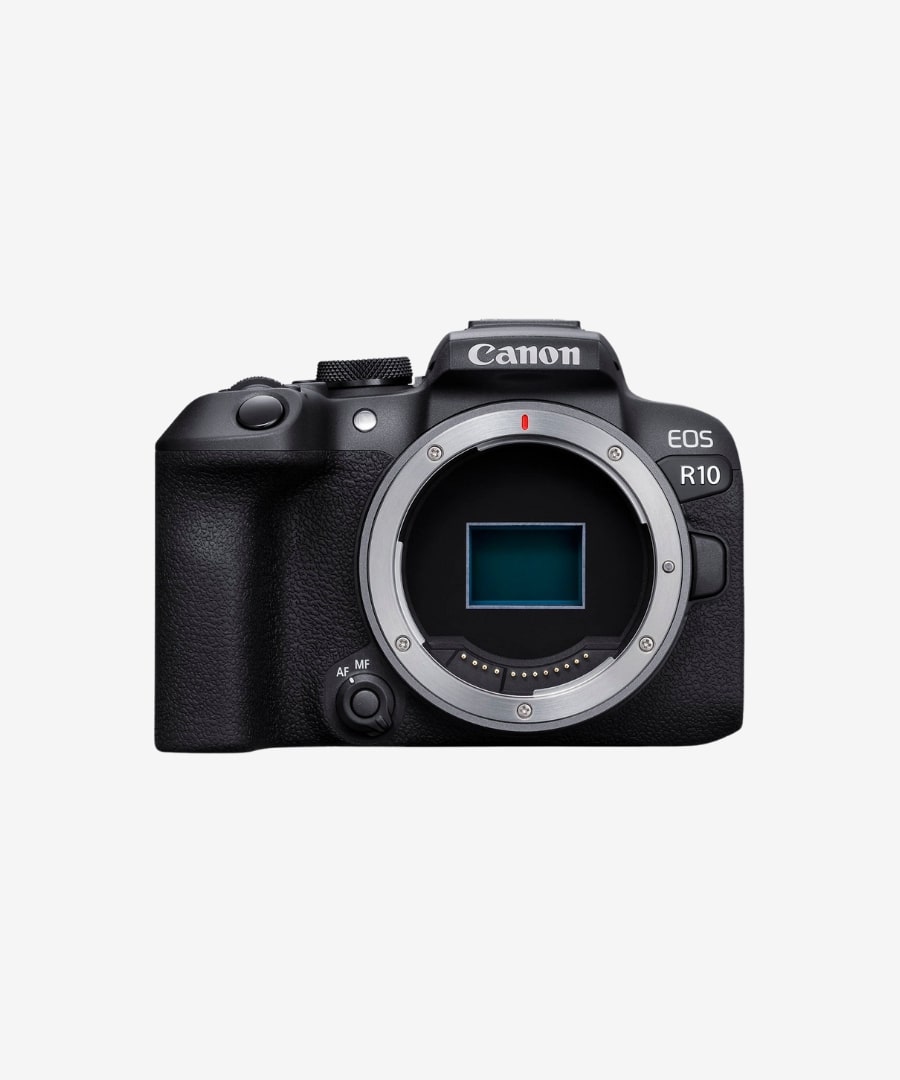
Battery Life and Power Management
The Canon R10 runs on the LP-E17 battery pack and provides decent shooting times for content creation. A full charge lets you take 450 shots using the LCD screen. This gives photographers plenty of flexibility during long shoots.
The camera’s battery life drops to 290 shots with viewfinder use. Flash photography reduces this number to around 210 shots. Video creators can record 4K footage continuously for about 60 minutes on a single charge. These numbers come from CIPA ratings which are conservative estimates. Real-life performance is a big deal as it means that these figures unless you spend time reviewing your shots.
Power Bank
The R10’s smooth USB-C connection helps extend your shooting time. Canon suggests using their USB Power Adapter PD-E1. Other power banks work too if they meet these requirements:
- 30W minimum power delivery support
- USB-C to USB-C cable compatibility
- Tested to work with Anker PowerCore III Elite 25600 60W
You need a battery installed even with external power. The USB-C port charges the battery while the camera is off. This is the quickest way to keep shooting for longer sessions.
Battery Grip
The R10 doesn’t have any official battery grips from Canon. The camera’s design prevents this as there’s no way to remove the battery door or add grip contacts. Users who need more power can:
- Keep extra LP-E17 batteries handy
- Use USB-C power delivery for static shots
- Connect using a low-profile right-angle USB-C connector
The battery indicator shows three bars at full charge. The last bar blinks red, so you really only get two distinct power levels. The camera automatically charges low batteries when plugged into external power. This briefly stops power going to the camera. Battery health stays optimal if you don’t charge for more than 24 hours.
Lens Options for Vlogging
Your choice of lens can make a huge difference in the quality of vlogs shot on the Canon R10. The R10’s RF mount system works with both RF and RF-S lenses, and you can use EF and EF-S lenses with an optional EF-EOS R adapter.
Kit Lens Performance
The RF-S 18-45mm F4.5-6.3 IS STM kit lens gives content creators a compact starting point. This lightweight lens delivers good image quality and quick autofocus. We designed it for APS-C sensors, and it has a 4-stop Image Stabilizer that helps you get steadier shots when shooting handheld.
The RF-S 18-150mm F3.5-6.3 IS STM brings more versatility with its 8.3x zoom range. This lens is a great way to get better travel content since it covers everything from wide-angle to medium telephoto in one package.
RF Lenses
The RF 50mm F1.8 STM stands out as a top choice for vloggers who need better low-light performance. This budget-friendly prime lens delivers sharp images that match lenses nowhere near its price range. The RF 15-30mm F4.5-6.3 IS STM gives you wider angles that work well for indoor spaces and architectural shots.
The Canon RF mount system supports these specialized vlogging setups:
- Wide-angle: RF-S 10-18mm f/4.5-6.3 IS STM for expansive scenes
- Standard zoom: RF-S 18-45mm for everyday content
- All-in-one: RF-S 18-150mm for travel and versatility
Third-party Lens Compatibility
Canon takes a selective approach to third-party lenses. Sigma and Tamron plan to release RF-mount APS-C lenses soon. You can use the EF-EOS R adapter to access Canon’s huge collection of EF and EF-S lenses.
The adapter costs around USD 130.00 and opens up many creative possibilities. Keep in mind that EF-M lenses won’t work with the R10, whatever adapters you try. The camera automatically applies corrections when you use native RF and RF-S lenses, giving you the best performance.

Connectivity and File Transfer
The Canon R10 makes content sharing easy with its detailed wireless connectivity features. A constant Bluetooth Low Energy connection keeps devices paired smoothly, which changes how creators handle their workflow.
Wi-Fi Capabilities
The camera’s built-in Wi-Fi works with both direct device connections and network-based transfers. The R10 lets you stream directly to YouTube through Wi-Fi without needing a computer. The camera creates its own Wi-Fi network so phones can connect directly to transfer images.
Professional streamers will find these great features:
- Direct YouTube streaming support
- Images transfer automatically while shooting
- Remote camera control via Wi-Fi
- Wireless tethering capabilities
USB Streaming
The EOS Webcam Utility Pro software turns the R10 into a high-quality webcam through USB. Creators get professional-grade video quality for virtual meetings and live streams. Windows and MAC users can run the software, and wireless connectivity gives flexibility in camera placement.
Users need specific USB cables that support data transfer for clean video output. Video quality stays consistent during USB streaming, though some settings might not work compared to normal recording modes.
Mobile Device Integration
The Canon Camera Connect app works as your main hub for mobile device control. Creators can use it to:
- Look through and save images straight from the camera
- Add Creative Assist effects to RAW images
- Control the camera remotely for photos and videos
- Transfer images automatically while shooting
Bluetooth pairing starts the mobile integration, and Wi-Fi connects automatically when needed for data transfer. Your connection stays active even with the camera off, giving you instant access whenever needed.
The R10’s automatic image transfer while shooting is a great way to get content quickly. Social media creators love this feature for instant access to their shots. Cloud storage through image.canon gateway gives you 10GB of space to manage content easily between devices.
Remote shooting features let you control everything from your smartphone. You can adjust exposure settings, focus points, and recording options right from your phone, which opens up new possibilities for solo content creation.
Conclusion
Canon EOS R10 has emerged as a game-changer in the mirrorless camera market. This camera packs professional-grade features you’d expect in expensive bodies, yet costs under $1,000. Content creators will appreciate its advanced autofocus system, crystal-clear 4K video, and user-friendly design.
Some users might miss having in-body stabilization. However, the camera’s lens-based and digital stabilization system works well in most shooting situations. Canon clearly understands what modern content creators need, as shown by the camera’s robust wireless features and ability to stream directly.
The R10 hits the sweet spot between performance and simplicity. It serves as an ideal gateway into Canon’s RF mount ecosystem. This versatile camera gives you everything needed to create stunning vlogs, live streams, and professional photos without breaking the bank or getting lost in complexity.



